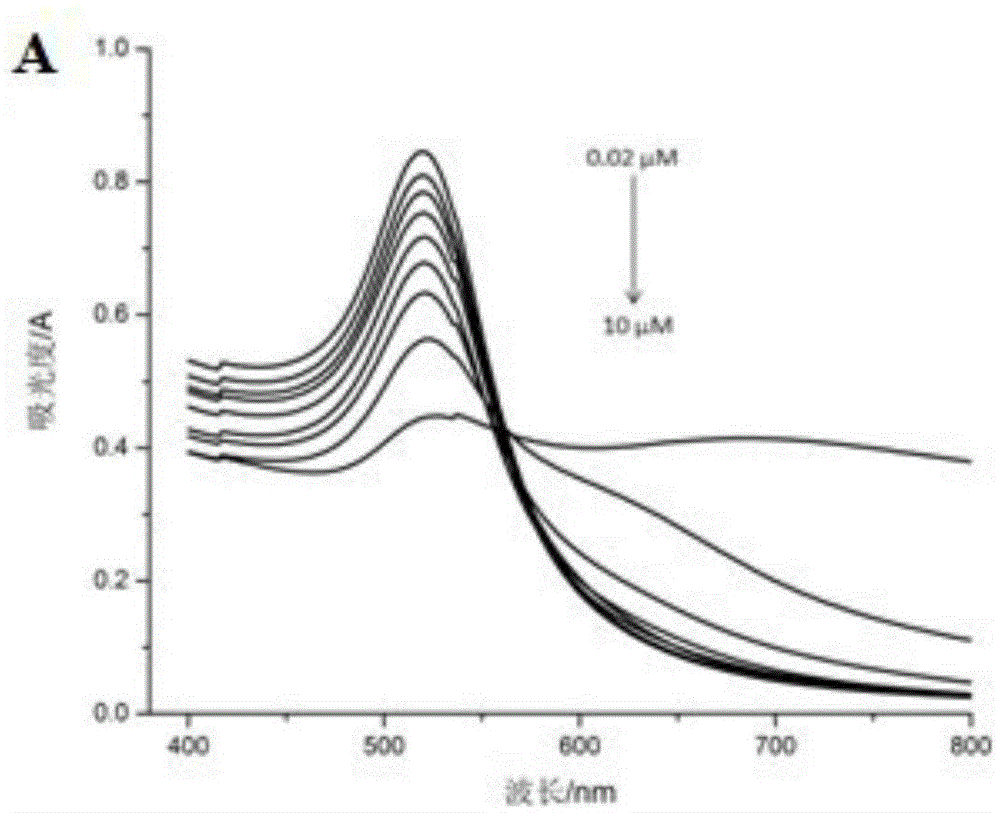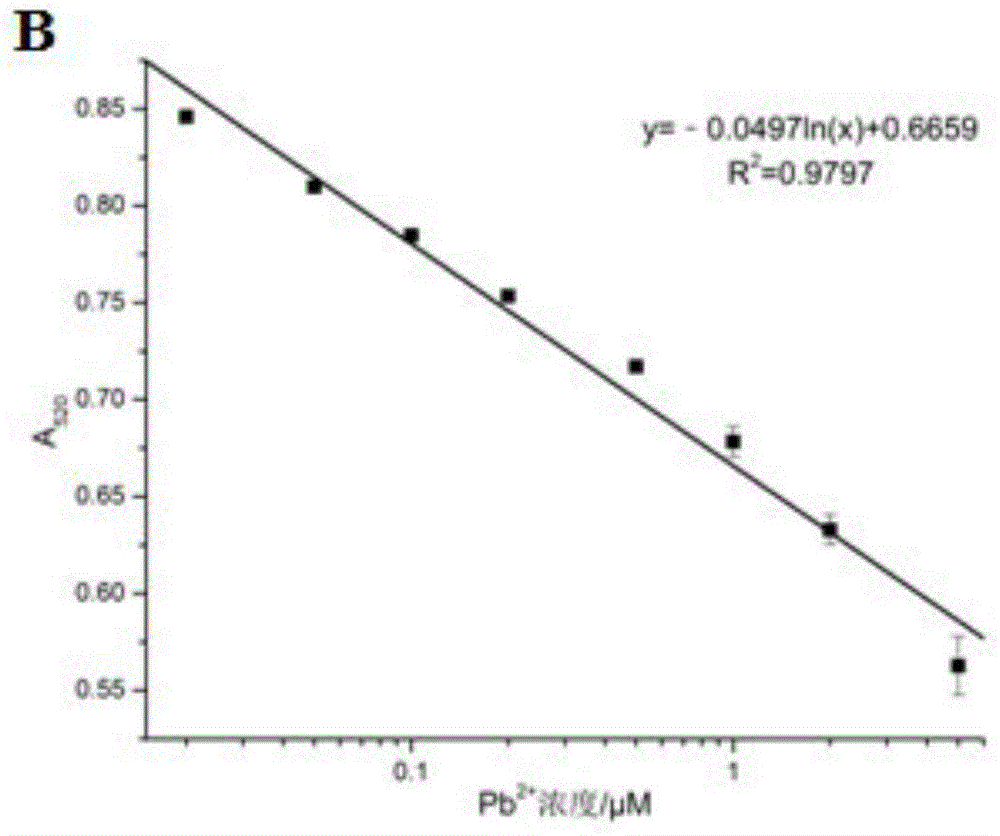Colorimetric method for detecting lead ions
A technology of lead ion and colorimetry, applied in the direction of color/spectral characteristic measurement, etc., can solve the problems of difficult on-site in-situ detection and high sensitivity, and achieve the effect of easy operation, high sensitivity and good selectivity
- Summary
- Abstract
- Description
- Claims
- Application Information
AI Technical Summary
Problems solved by technology
Method used
Image
Examples
preparation example Construction
[0031] 2. Preparation of Cys-modified AuNPs solution
[0032] After centrifuging 1 mL of AuNPs solution at 12000 rpm for 20 min, the supernatant was sucked off and resuspended in 900 μL of ultrapure water, and 10 μL of 5 μM freshly prepared Cys solution was added, shaken and left to incubate for 0.5 h. figure 1 (B) It can be shown that Cys has been modified to the surface of AuNPs, and Cys–AuNPs still exist in the solution in a monodisperse form.
[0033] 3. New Pb 2+ Configuration of standard solution
[0034] Take 1 mL of Pb with different concentrations of 0, 0.2, 0.5, 1, 2, 5, 10, 20, 50, 100 μM 2+ Add 20μL of 10mM potassium thiocyanate solution to the standard solution to make new Pb 2+ standard solution.
[0035] 4. Pb 2+ determination
[0036] 1. Detection sensitivity
[0037] Add 0, 0.02, 0.05, 0.1, 0.2, 0.5, 1, 2, 5, 10 μM standard Pb to the above 900 μL Cys–AuNPs solution 2+ After the solution was incubated for 30 minutes, the spectrum was obtained by scannin...
Embodiment 1
[0041] 13nm AuNPs were prepared by reducing HAuCl with sodium citrate according to the literature method 4 synthetic method. Add 10 μL of 5 μM freshly prepared Cys solution to 900 μL of the reconstituted AuNPs solution, shake and incubate for 0.5 h. Take 1mL of drinking water and add 10μL of 100μM Pb 2+ Standard solution and 2μL 10mM potassium thiocyanate solution. Add 100 μL of the above solution to 0.9 mL of Cys–AuNPs solution, and after incubation for 30 minutes, scan and record the spectrum in the wavelength range of 400-800 nm. It was found that the standard deviation of 3 measurements was 0.56%, and the average recovery was 95.7%, which indicated that the system could be used for Pb in drinking water 2+ detection.
Embodiment 2
[0043] Take 1mL drinking water, add 10μL 1mM standard Pb 2+ solution and 2 μL of 10 mM potassium thiocyanate solution. Add 100 μL of the above solution to 0.9 mL of Cys–AuNPs solution, and after incubation for 30 minutes, scan and record the spectrum in the wavelength range of 400-800 nm. The standard deviation of 3 measurements is 0.346%, and the average recovery rate is 102.4%, which indicates that the system can be used for Pb in drinking water 2+ detection.
PUM
 Login to View More
Login to View More Abstract
Description
Claims
Application Information
 Login to View More
Login to View More - R&D
- Intellectual Property
- Life Sciences
- Materials
- Tech Scout
- Unparalleled Data Quality
- Higher Quality Content
- 60% Fewer Hallucinations
Browse by: Latest US Patents, China's latest patents, Technical Efficacy Thesaurus, Application Domain, Technology Topic, Popular Technical Reports.
© 2025 PatSnap. All rights reserved.Legal|Privacy policy|Modern Slavery Act Transparency Statement|Sitemap|About US| Contact US: help@patsnap.com



